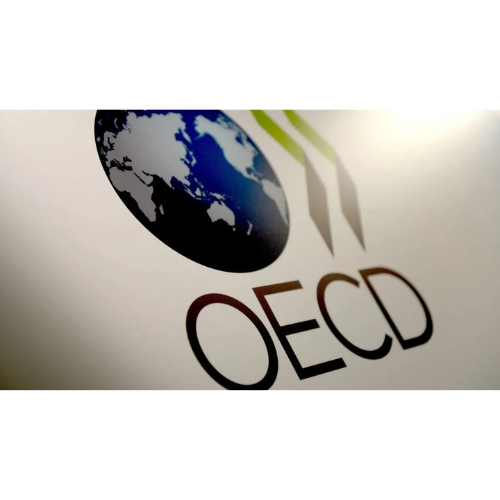OECD Raises Global Growth Forecast but Warns of Looming Tariff Shock
In its latest Interim Economic Outlook, the Organisation for Economic Co-operation and Development (OECD) surprised markets by upgrading its global growth forecast for 2025 to 3.2%, up from 2.9% in June. But behind the headline lies a more sobering message: the full impact of President Donald Trump’s sweeping tariffs has yet to be felt—and could cast a long shadow over the world economy in the months ahead.
The OECD’s revision reflects stronger-than-expected performance in several emerging markets, bolstered by inventory stockpiling and robust investment in artificial intelligence. In the United States, AI-related spending helped offset some of the drag from rising trade barriers. China, meanwhile, benefited from targeted fiscal stimulus.
Many firms rushed to import goods ahead of Trump’s tariff hikes—a phenomenon known as “front-loading”—which artificially boosted trade volumes and masked underlying weakness.
“The full effects of these tariffs will become clearer as firms run down the inventories that were built up in response to tariff announcements,” said OECD Secretary-General Mathias Cormann. “Higher tariff rates continue to be implemented, and their impact is becoming increasingly visible in spending choices, labor markets, and consumer prices”.
Trump’s Tariff Strategy: A High-Stakes Gamble
Since April, President Trump has imposed a baseline 10% tariff on imports from dozens of countries, with some duties reaching as high as 25%. The effective U.S. tariff rate on merchandise imports hit 19.5% by the end of August—the highest level since 1933, during the depths of the Great Depression.
The administration argues that these tariffs are necessary to protect American industries and rebalance trade relationships. Deals have been struck with allies like Japan, Britain, and the European Union, but negotiations with China remain tense. The OECD warns that prolonged uncertainty and further escalation could dampen investment, disrupt supply chains, and slow global growth.
Are Tariffs the Right Tool?

Economists remain divided on the effectiveness of Trump’s tariff strategy. Supporters argue that it forces trading partners to negotiate fairer deals and protects domestic jobs. Critics, however, warn that tariffs are a blunt instrument that often hurt consumers and small businesses more than foreign competitors.
The OECD’s report adds weight to the latter view. It estimates that if the U.S. were to raise tariffs by an additional 10% across the board, global output could fall by 0.3% within two years, while American GDP would drop by 0.6%.
“More trade is good for growth,” said OECD Chief Economist Álvaro Santos Pereira. “It is important that countries continue to talk and are able to get agreements to reduce trade barriers”.
